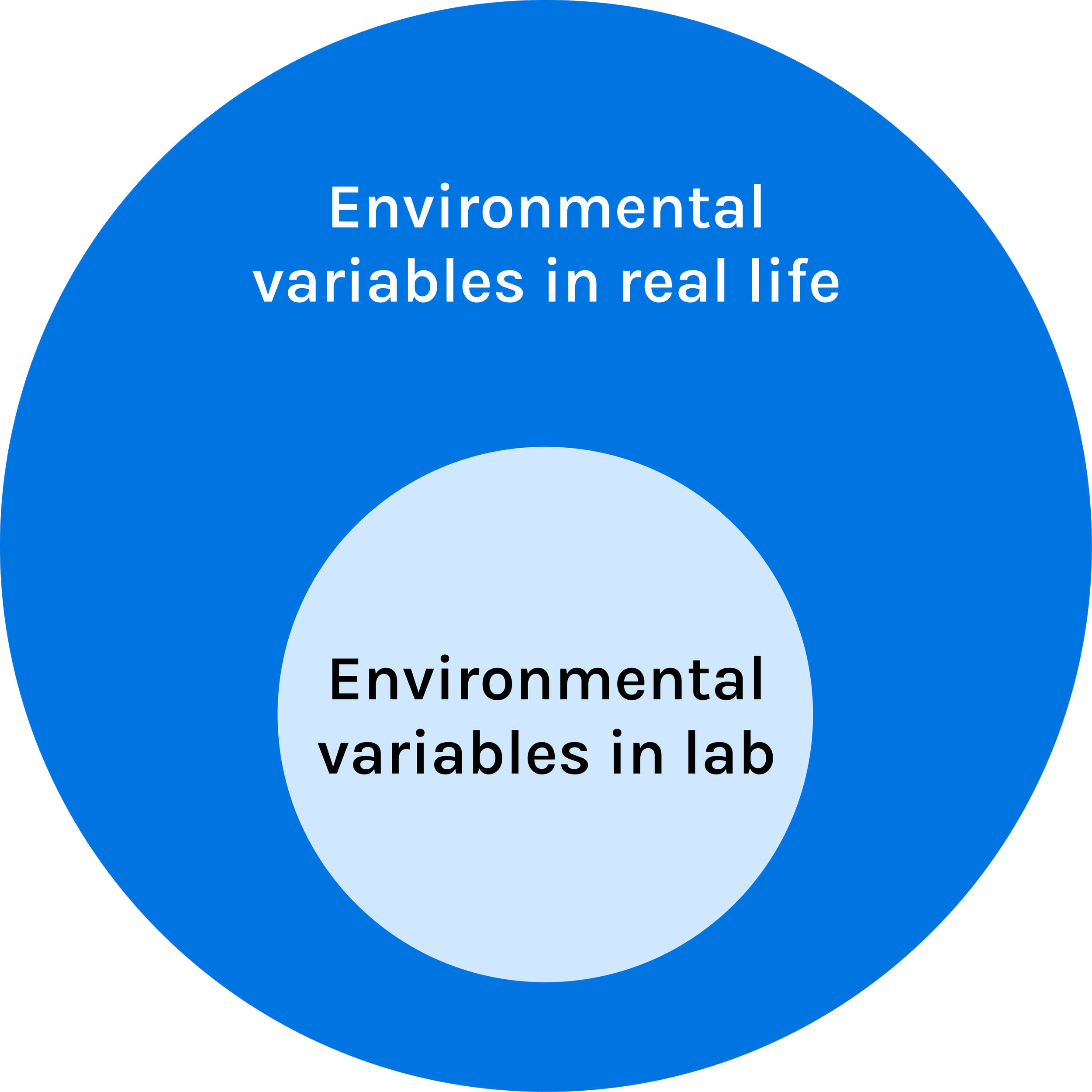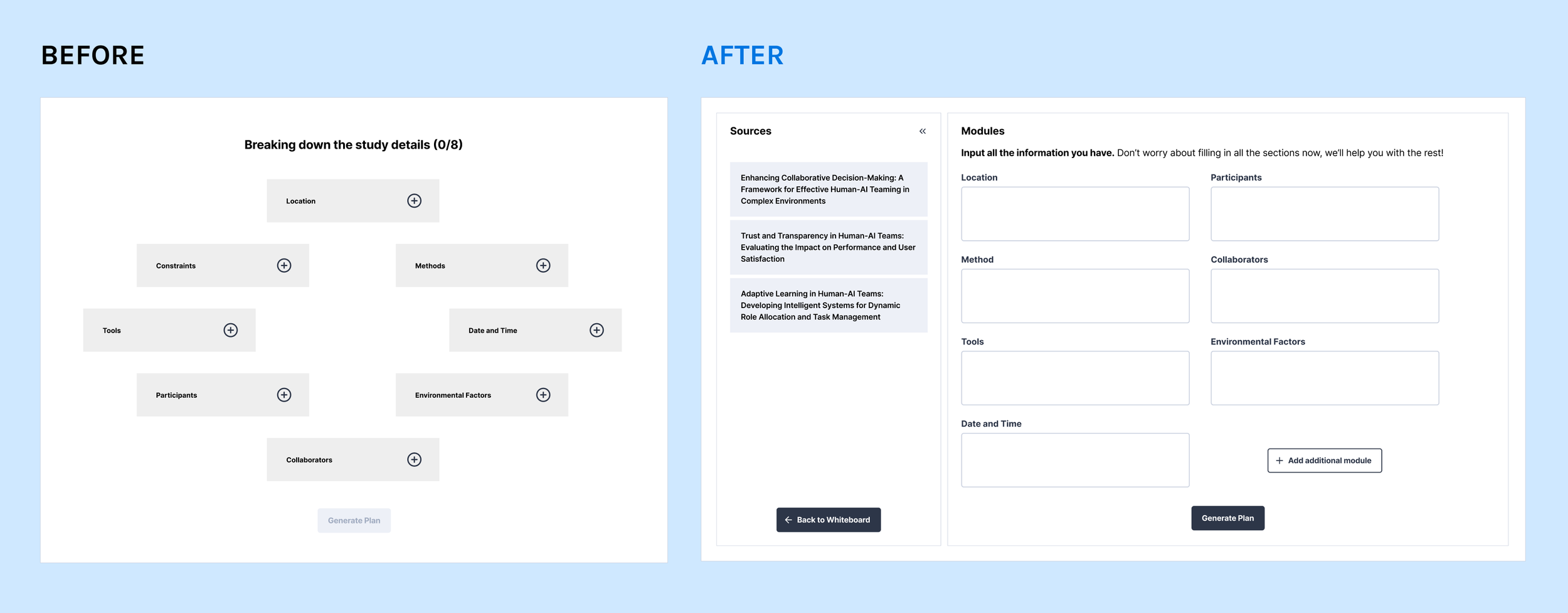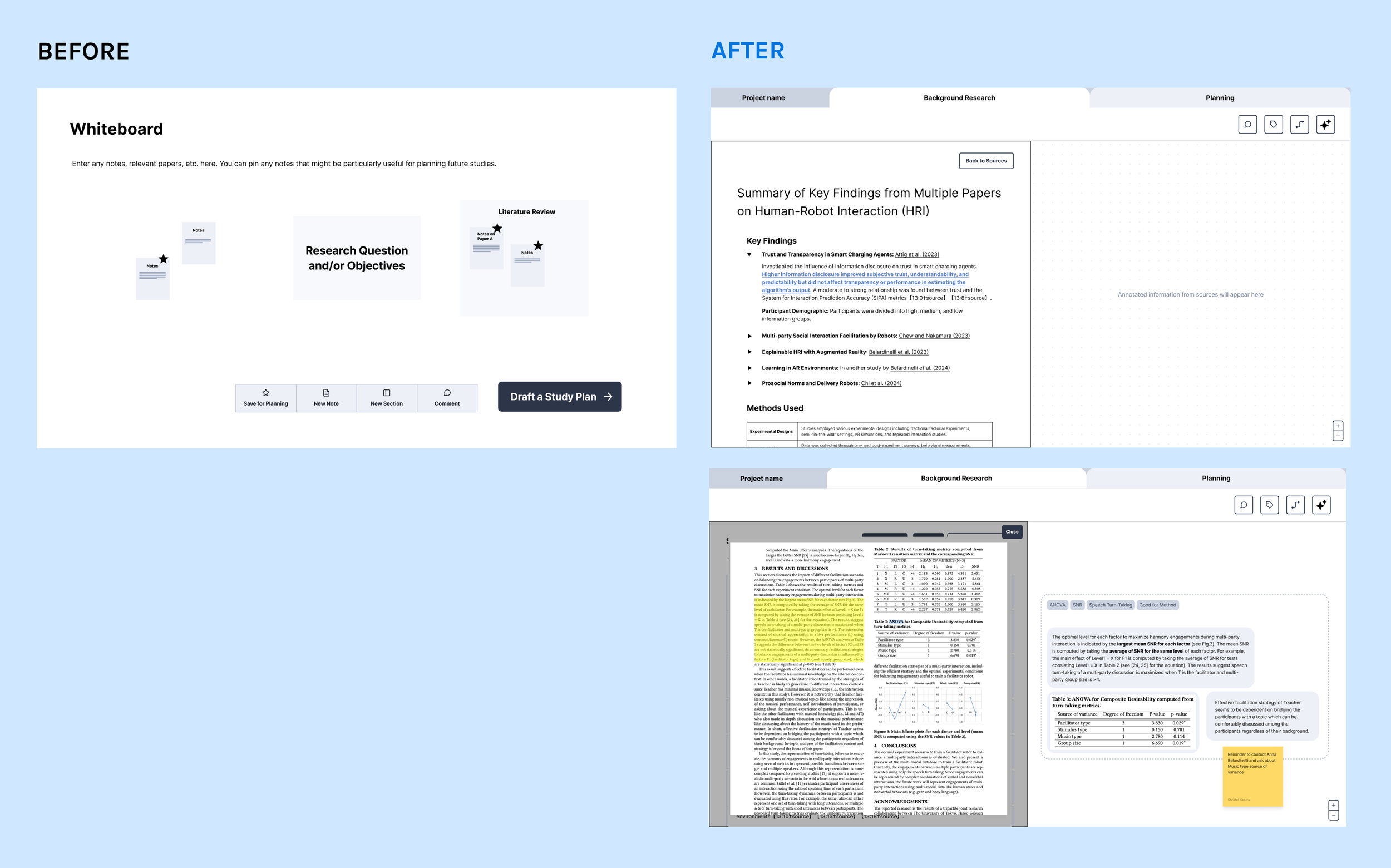Honda Research Institute: Aether
Sponsored by Honda Research Institute↗.
Facilitating innovative, real-world human-AI teaming research by using generative AI to streamline researcher tasks.
Responsibilities
I contributed to early-stage research and problem discovery. I also contributed heavily to ideation and wireframing of the final solution, focusing mainly on designing features to accelerate background research and building a component library and style guidelines. I also helped prepare final client-facing deliverables to be distributed through Honda Research Institute.
My Role
Product Design
UX Research
Duration
8 months
Team
3 Product Designers
1 UX Researcher
1 UX Engineer
Final Deliverables
High-Fidelity Prototype
Design System
Product Roadmap
Functional Website Prototype
Final Client Presentation
BACKGROUND
To pioneer innovation in AI and mobility, Honda Research Institute has to reconsider how it approaches research.
As the organization shifts away from traditional vehicles and thinks more broadly about the future of mobility and transportation, it has realized it also needs to revisit how it currently performs research.
Currently, most HRI research is done in lab or simulation environments, impeding the ability to account for spontaneous environmental variables.
PROBLEM
Researchers struggle to obtain study proposal approval because they are overwhelmed by the prerequisite tasks.
Before conducting early-stage research outside of the lab, researchers must undergo several preliminary activities that are time-consuming and tedious.
“Starting is the hardest part.”
— Senior Research Scientist at HRI
SOLUTION
Aether is an enterprise AI research assistant that streamlines researcher workflows in order to unblock innovative research practices.
AI effectively summarizes relevant research insights.
Researchers can import papers to Aether, and then obtain comprehensive, organized summaries of the literature.
Annotate and share info for smoother organization for faster review.
Annotate and share info for smoother organization and collaboration.
Memos and tags provide for quick research synthesis and retrieval.
The whiteboard space on the right enables researchers to share what they’re learning with collaborators.
Sometimes it’s hard coming up with tangible details that fit into the logistics. If researchers get stuck, they can draw ideas from AI recommendations to help them fill in the rest of the required research study information.
RESEARCHER PAIN POINTS
For researchers, getting started on a new project is the hardest part of the process.
Background research review and synthesis are tedious.
Researchers must go through A LOT (sometimes hundreds!) of previous papers to identify key findings to inform their own future studies.
There is little awareness about doing real-world research.
A general lack of awareness about how to carry out research in the real world compounded the first two pain points. Since most HRI researchers are accustomed to doing early-stage research in highly-controlled environments, they barely knew where they would begin if required to move their studies to real-life environments.
Combining details into a cohesive study plan is hard.
From methods to be used, to target participant demographics, everything must make sense as a whole for the study to be considered for approval.
APPROACH
Work with what’s already known and be comfortable making assumptions when there is no clear direction forward.
There was no existing precedent for encouraging researchers to conduct more real-world studies. However, we realized we could still make big but reasonable assumptions while designing a system that both addresses current problems and tries to shape the future that the organization envisions.
DESIGN HIGHLIGHTS
Changed original web module input page to a more straightforward structure for ease of use.
Going off on a senior researcher’s insight that study planning is a non-linear process, I originally made the modules web-like for fluidity. Testing showed that this was confusing for most users, so a straightforward column layout was later used instead.
Incorporated more ambitious AI features to better “nudge” researchers into expanding their study methodologies.
The original template idea, we quickly realized, still placed a lot of the burden on research scientists when it came to figuring out how to adopt novel study methods. Here, the team started to grow more bold in designing for future-facing spaces and thinking about how emerging AI capabilities could streamline current workflows for scientists.
Expanded background research features for greater complexity and allow researchers to analyze vast amounts of information faster.
These features initially started off very simple, but quickly evolved after the client voiced the needs for higher complexity. These features allow researchers to analyze and annotate prior literature faster so they can identify new opportunities faster and in a more organized fashion.
OUTCOMES
Improved HRI researcher productivity when performing crucial tasks.
Researchers found that they could complete tasks much faster while using Aether, and also liked that they could keep their papers organized in a centralized location.
“The ability to quickly annotate papers and extract key points is valuable.”
— Senior Research Scientist at HRI
Presented research findings, final design, and product roadmap to management.
We prepared an in-depth presentation to communicate to stakeholders and set the ball rolling on how they could realize their vision of becoming an AI and mobility research pioneer.
Additionally, we prepared a detailed client research report to be distributed throughout HRI.
REFLECTIONS
When dealing with a lot of ambiguity, keep asking “Why?”.
There were so many times where it felt as if I was stumbling around blindfolded in a maze, but constantly asking “why” this project mattered and “why” it mattered that we try to facilitate real-world concept testing was crucial in navigating this future-facing project.
Don’t be afraid to make major changes! The design journey is messy and full of surprises.
We reframed our main problem A LOT of times throughout the project. It was important that we trust ourselves and our insights to make new changes and pivot to new goals. This project truly was a rollercoaster and helped me accept that I don’t need to get things “right” the first time.







